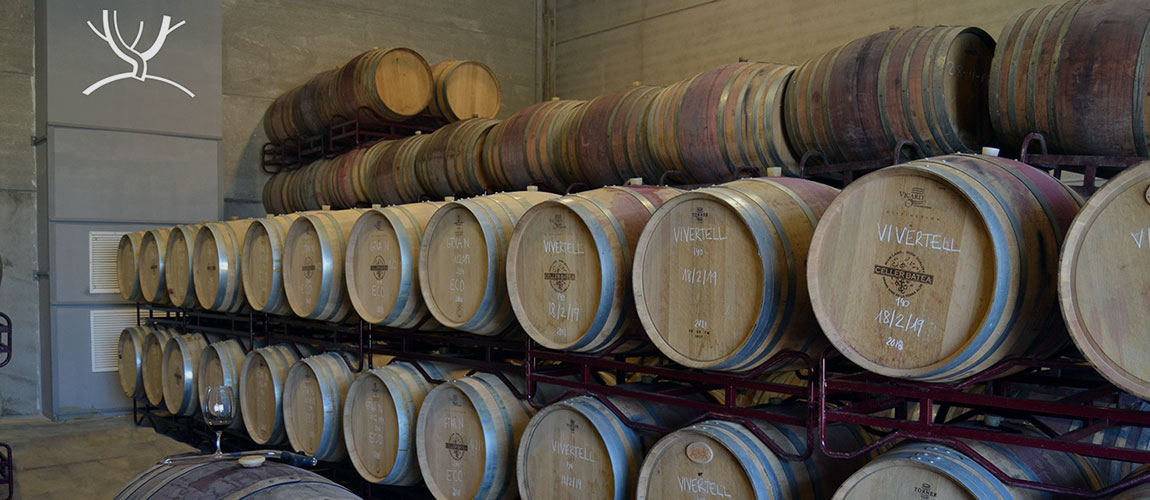



Celler Batea's Vivertell is one of this winery's oldest brands. It was first produced in 1977 and originally made entirely with grapes from a farm in the village of Batea, to which it owes its name.
 Technical sheet
Technical sheetRed wine
0.75 l
Garnatxa negra, Ull de llebre, Syrah, Cabernet sauvignon
Do Terra Alta
Crianza
Intense and elegant
14.5%
Contains sulphites
Dark cherry.
Intense and complex nose of ripe fruit with a spicy background.
Round on the palate, good tannins, toasted notes, cocoa, spicy. Structured and complex. Good and lingering midpalate.
A red wine made with four varieties that brings out the best of each one.
Between 16 and 18 degrees
It goes well with cured cheeses, cold cuts, oily fish, game and red meats, both grilled and stewed.
A very easy-to-drink red wine that gives an insight into the fanTastingic world of barrel-aged wines. Very well integrated. But that doesn't mean it loses its freshness and elegance. It will make your mouth water. It's also a great wine for pairing. Who said that fish should only be eaten with white wine? Tear up the rule book and pair it with sardines.
Old vines with an age of over 40 years. It takes the name of one of the farms where the grapes were harvested in 1977.
Meticulous selection of old vines, with each variety being vinified separately. The grapes are destemmed and crushed prior to temperature-controlled alcoholic fermentation in stainless steel tanks. After malolactic fermentation, the final coupage is carried out. Aged for 14 months in French oak barrels.

The relationship of the Tierra Alta with wine comes from the Phoenicians, who set up trade routes with various geographical points across the Iberian Peninsula.
And it was via the mouth of the River Ebro in the Mediterranean Sea that today's Batea, located less than fifty kilometres away, had its first contact with wine in the seventh century BC.

The so-called Customs of Orta (1296) and Miravet (1319) already regulated the sale of wine from the region. But it wasn't until the late nineteenth century that winegrowing became widespread. With the phylloxera plague, the demand from producers for DO Terra Alta [1] grapes increased, first from the French and then from the neighbouring regions that today are DO Tarragona and DOQ Priorat. In the early twentieth century, the organisation of cooperatives was a revolution.

Viniscoop's wines and cavas are authentic products of the land. They are made by agricultural cooperatives, which represent hundreds of farming families.
With your purchase you are promoting the social, economic and environmental sustainability of the territory, offering opportunities to young people in rural areas and enjoying authentic products, made following the tradition inherited for generations.
Our values make us different. Cheers and good wine!
Reviews